
In this activity students will determine how many routes a taxicab can take to get from point A to point B given a set of assumptions.
- Subject:
- Mathematics
- Material Type:
- Activity/Lab
- Date Added:
- 05/30/2021

In this activity students will determine how many routes a taxicab can take to get from point A to point B given a set of assumptions.
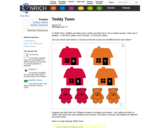
Doing this Nrich problem is an excellent way to work at problem solving with learners. The problem lends itself to small group work, and provides an engaging context for pupils to use the skills of trial and error, and working systematically.
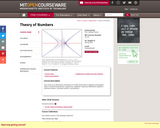
This course is an elementary introduction to number theory with no algebraic prerequisites. Topics covered include primes, congruences, quadratic reciprocity, diophantine equations, irrational numbers, continued fractions, and partitions.

Students explore combinations in this Nrich activity. There is a simulator to help students with visualizing the possible outcomes. Discussion is a key element.

This Nrich problem supports the development of the idea of generic proof with the children. This is a tricky concept to grasp but it draws attention to mathematical structures that are not often addressed at primary school level.
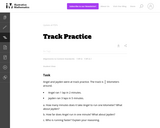
Parts (a) and (b) of the task ask students to find the unit rates that one can compute in this context. Part (b) does not specify whether the units should be laps or km, so answers can be expressed using either one.
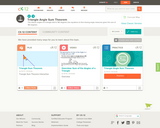
This short video and interactive assessment activity is designed to teach third graders an overview: sum of the angles of a triangle.
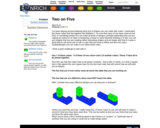
This Nrich investigation is one that uses the very popular multilink cubes. It gives a wonderful opportunity for pupils to explore ways of recording. This activity is also designed to nurture children's curiosity by introducing mathematics into a familiar non-mathematical context. Children might end up pursuing different ideas from each other and this freedom to explore may well encourage learners to persevere more than they might usually. In this way, they will immerse themselves in the particular number sequence they have chosen to use, which will help them gain a deep understanding of its structure. This activity lends itself to pupils posing their own questions in the form “I wonder what would happen if...?”

This video is meant to be a fun, hands-on session that gets students to think hard about how machines work. It teaches them the connection between the geometry that they study and the kinematics that engineers use -- explaining that kinematics is simply geometry in motion. In this lesson, geometry will be used in a way that students are not used to. Materials necessary for the hands-on activities include two options: pegboard, nails/screws and a small saw; or colored construction paper, thumbtacks and scissors. Some in-class activities for the breaks between the video segments include: exploring the role of geometry in a slider-crank mechanism; determining at which point to locate a joint or bearing in a mechanism; recognizing useful mechanisms in the students' communities that employ the same guided motion they have been studying.
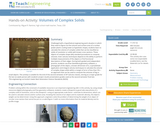
Challenged with a hypothetical engineering work situation in which they need to figure out the volume and surface area of a nuclear power plant’s cooling tower (a hyperbolic shape), students learn to calculate the volume of complex solids that can be classified as solids of revolution or solids with known cross sections. These objects of complex shape defy standard procedures to compute volumes. Even calculus techniques depend on the ability to perform multiple measurements of the objects or find functional descriptions of their edges. During both guided and independent practice, students use (free GeoGebra) geometry software, a photograph of the object, a known dimension of it, a spreadsheet application and integral calculus techniques to calculate the volume of complex shape solids within a margin of error of less than 5%—an approach that can be used to compute the volumes of big or small objects. This activity is suitable for the end of the second semester of AP Calculus classes, serving as a major grade for the last six-week period, with students’ project results presentation grades used as the second semester final test.

Students are introduced to the nano-size length scale as they make measurements and calculate unit conversions. They measure common objects and convert their units to nanometers, giving them a simple reference frame for understanding the very small size of nanometers. Then, they compare provided length data from objects too small to measure, such as a human hair and a flea, giving them a comparative insight to the nanotechnology scale. Using familiar and common objects for comparison helps students understand more complex scientific concepts.

This video lesson will introduce students to algorithmic thinking through the use of a popular field in graph theory—social networking. Specifically, by acting as nodes in a graph (i.e. people in a social network), the students will experientially gain an understanding of graph theory terminology and distance in a graph (i.e. number of introductions required to meet a target person). Once the idea of distance in a graph has been built, the students will discover Dijkstra's Algorithm. The lesson should take approximately 90 minutes and can be comfortably partitioned across two class sessions if necessary (see the note in the accompanying Teacher Guide). There are no special supplies needed for this class and all necessary hand-outs can be downloaded from this website.